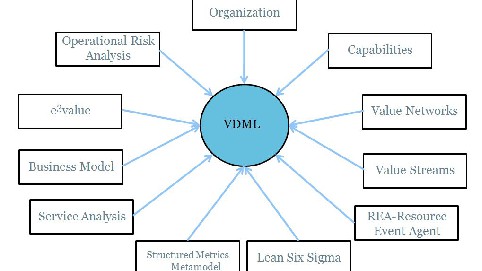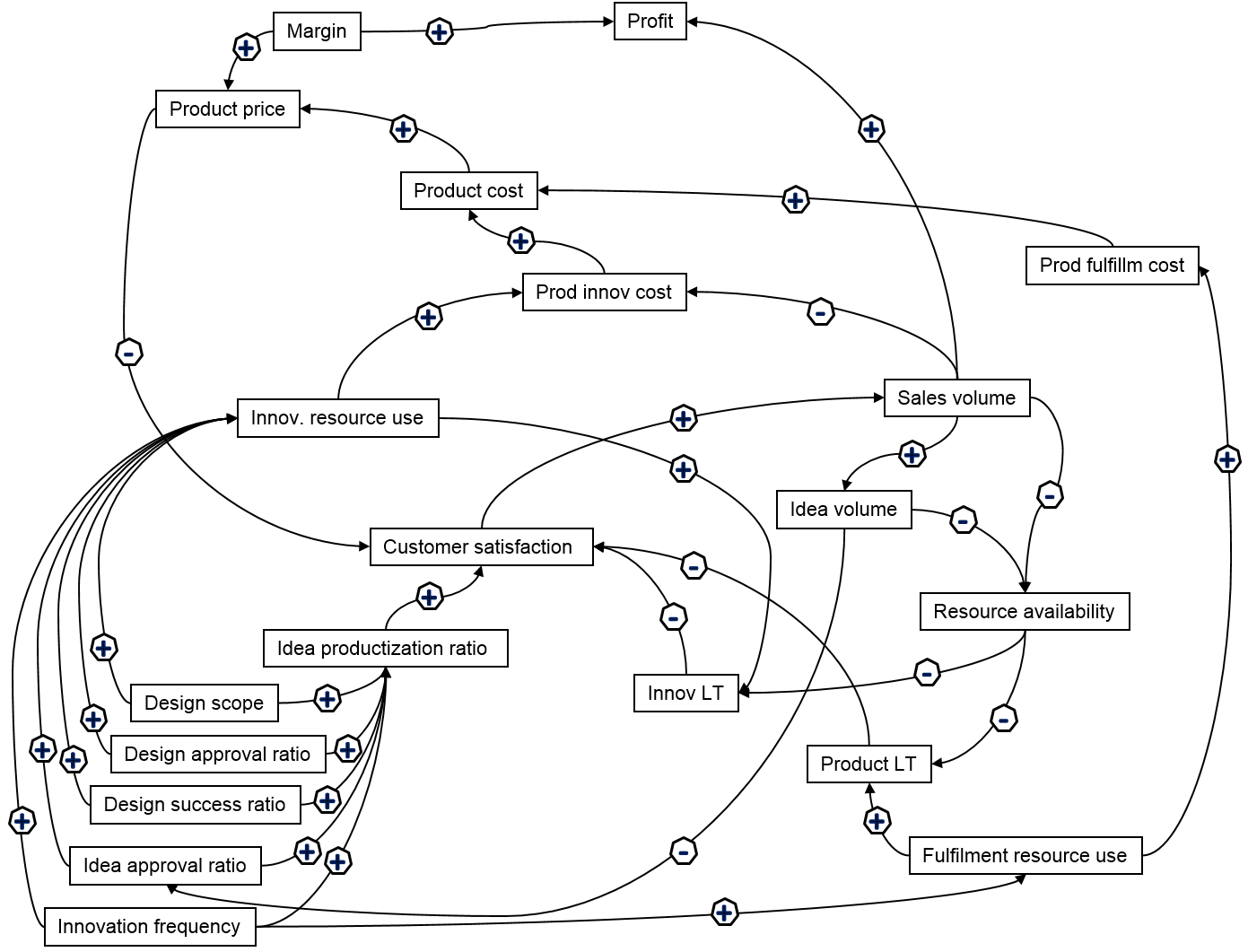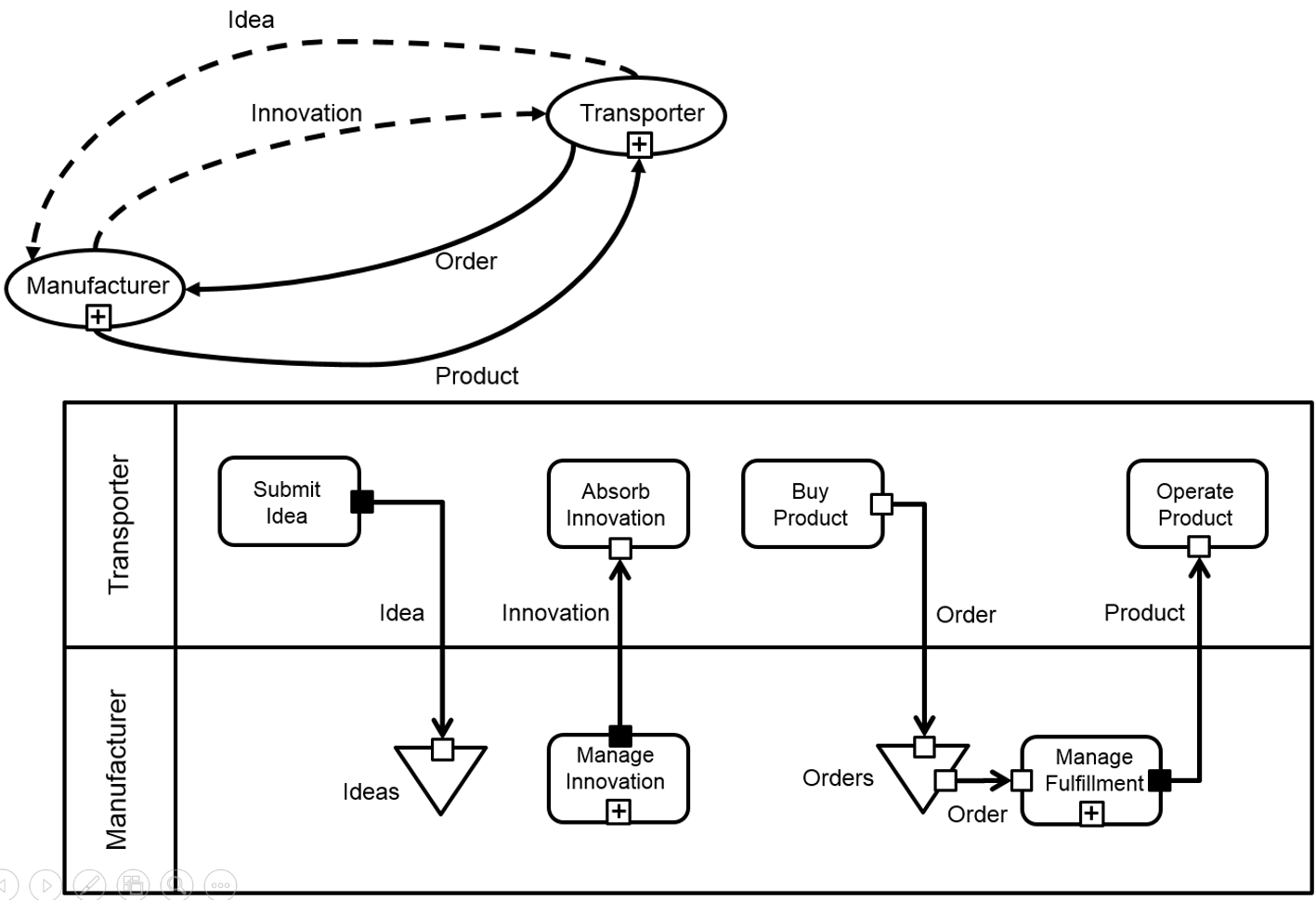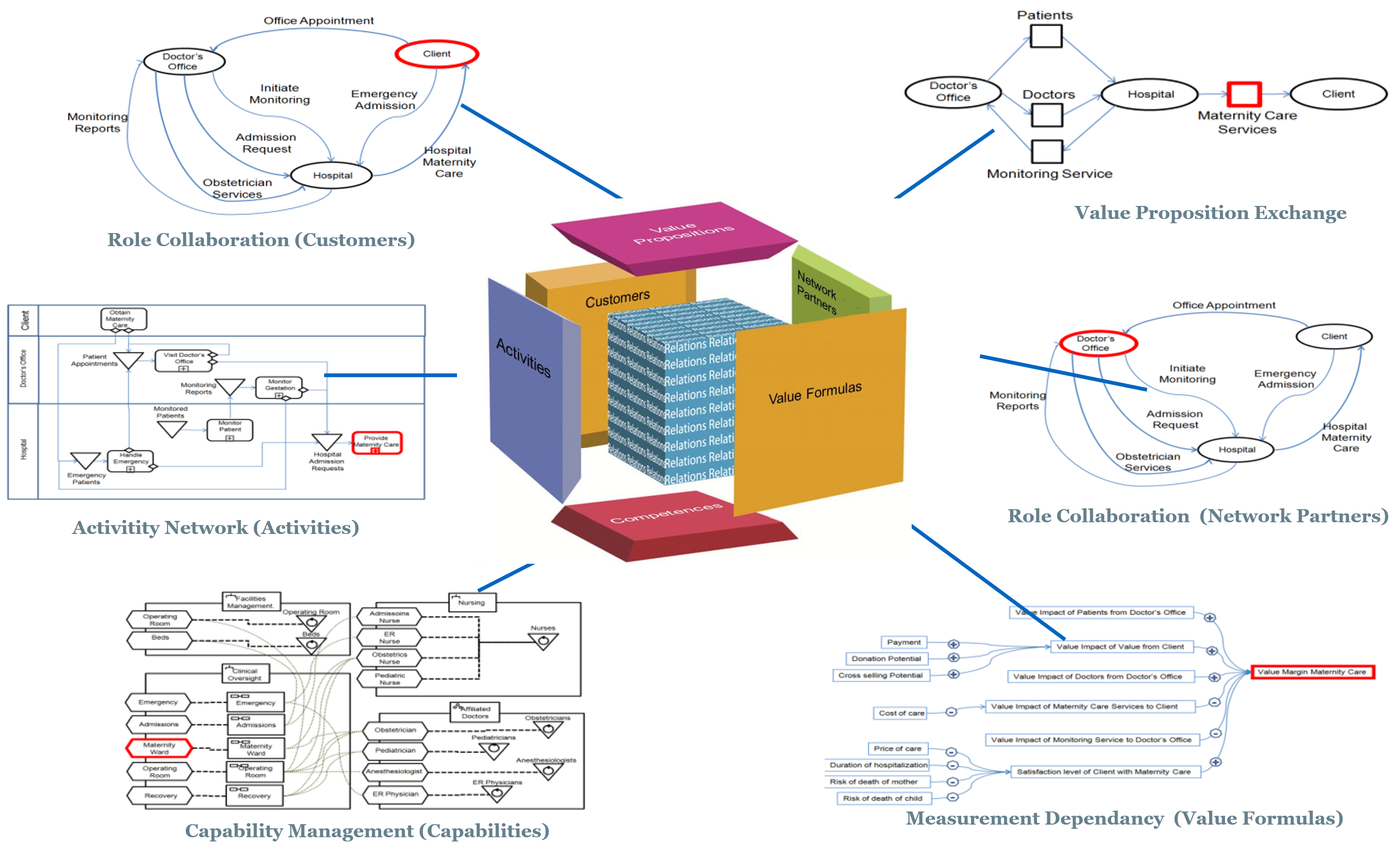The purpose of VDML is to provide a standard modeling language for analysis and design of the operation of an enterprise with particular focus on the creation and exchange of value. It provides an abstraction of the operation of an enterprise that is appropriate for business executives, along with representation of supporting detail for business analysts to link strategy and business models to the activities, roles, and capabilities that run the enterprise.
The target users are:
- business people (executives)
- business architects
- analysts
- managers
Also Information systems analysts and designers may use VDML models as specifications for the design of supporting information systems.
VDML is designed to address several critical business challenges:
- It creates a robust way to model both tangible and intangible value flows
- It provides the capacity to model complex collaborations and business networks
- It provides a flexible way to model business activities to more readily support continuous transformation in environments of high variability
- It supports more effective shared capabilities optimization and deployment
Table below, highlights these Business challenges and VDML solutions.
| Business Challenge | How VDML Meets the Challenge |
|---|---|
| Model both tangible and intangible value flows |
|
| Model complex collaborations and business networks |
|
| Model business transformations in environments of high variability |
|
| Model shared capabilities and their deployment across multiple activities and lines of business |
|
Given these challenges, VDML is designed to bring together the organization or network structure with the creation and exchange of value and defines the capabilities that produce value. In particular, the VDML metamodel has been developed to support value chain, value stream and capability analysis, and has been refined to support Value Network Analysis (VNA), e3value modeling, REA (Resource Event Agent) analysis and an owner/investor business model. Further, it is designed to support modeling of the human collaborations and role-based interactions both within organizations and within networks that are required to support value delivery. VDML can demonstrate the management of resources, assignment of people and roles, exchanges with business partners and performance measures that help identify problems and opportunities to improve the business.

VDML Roots
You can read more about the roots of VDML in my set of blogs about the VDML roots.
Central to VDML is the concept of value. Value is a measurable factor of benefit delivered to a recipient in association with a deliverable. Examples of value include the fitness of a product for a purpose, a measure of product reliability, a probability of production defects, a commitment to future delivery of another deliverable, a measure of product or brand prestige, information that provides a business advantage, or any other feature or benefit that would affect the desirability of a product, service or economic exchange. VDML is designed to support the optimization of stakeholder value for both internal and external facing business activities. VDML supports value measurement from both operational and recipient satisfaction perspectives. It supports modeling and analysis of both tangible and intangible business value and is compatible with resource management frameworks utilizing intangible assets and well as traditional financial assets and resources.
Also central to VDML is the ability to model collaborative business relationships and role based business networks. At the level of business partner interactions, VDML can represent the net exchange of value between business entities (e.g., companies, agencies or consumers) or go into the detail of transactional exchanges for achieving exchange agreements and managing the exchange of economic resources. These value exchange models can support analysis of the overall effect of exchanges between multiple enterprises that enable each of the participants to realize a perceived net gain to sustain the relationship. Such analyses also can be important for understanding the costs, risks, and delays of these transactions and the viability of the business model.
For analysis of business operations, VDML supports a perspective of value-driven business design by focusing on the activities and flow of deliverables that produce products or services and the delivery of tangible and intangible values. The delivery of value can focus on end customers and external stakeholders as well as value delivered to internal customers or the enterprise entity.
VDML can provide a framework and generate requirements for the design of business processes, but it provides a more abstract view than BPMN and other process modeling tools by focusing on the consumption and production of deliverables and the statistical performance and contributions of value by activities including cost, quality and duration. As such it provides a vital link between business strategy and enterprise value models and business processes. However, VDML avoids the detail of the operational control aspects of business processes. The focus is on delivery of value and the means to that end.

Measurement Dependency diagram
VDML scales from key operational activities to full industry level business models and large scale business networks. It is appropriate for commercial and non-commercial endeavors as well as government agencies. A VDML model can extend from product concept to full commercialization, delivery and customer support. It can support the capture of measurements to assess the impact of performance of specific activities on the values of end products or services. It aligns these concepts with business capabilities that can be managed, shared and optimized from an enterprise perspective, and it links all of these with the responsible people, collaborations, and organizations that manage and perform these capabilities.
The measurements of a VDML model represent statistical figures for delivery of a product or service, for a market segment, a product line, a product mix or a line of business or other operational variations. Where a line of business involves similar but different product configurations, the measurements can represent a particular product mix. Different scenarios may be used to analyze different products or product mixes that, for the most part, use the same capabilities.

Role Collaboration and Activity Network
More detailed analysis that reflects variability of products and operating circumstances would require simulation. VDML does not directly support simulation, but a VDML model can capture the fundamental data needed to support simulation such as system dynamics, Monte Carlo simulation and discrete event simulation. Changes to a VDML model would then be directly incorporated into the simulation and results can be incorporated to update or create a VDML scenario. While these simulation techniques are outside the scope of VDML, it is expected that some implementers may want to include such capabilities with their products. The design of the VDML metamodel is intended to be compatible with extensions to include simulation.
This specification includes a limited, normative, graphical notation. It is expected that notation will evolve as users identify new ways to view their robust models. Implementations may implement non-normative views that are familiar to users of existing techniques. It is expected that the graphical displays will be complemented by tabular displays, some of which are suggested by the use cases.
This specification does not define the various measurements applicable to performance and value delivery analysis. It is expected that these will be domain/industry-dependent and that industry or professional groups will establish shared libraries to be imported as a basis for models in that industry. This specification incorporates the SMM (Structured Metrics Metamodel) specification to represent the measure libraries and the measurable properties of model elements.
The scope of a particular VDML model (a model created using VDML) will depend very much on the purpose of the model. The expectation is that a VDML model can be applied to address specific problems, but then can be maintained and grown to provide a sustainable, integrated abstraction of the operation of the enterprise so that little need be added to the model to address problems and opportunities that are encountered in the future.
Insert image about “VDMbee Value Delivery Manager bringing all VDML elements together”

All together in VDMbee VMP

